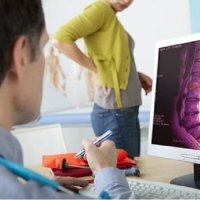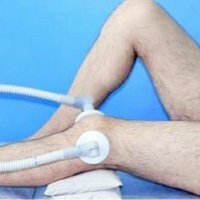Computed tomography of the spine

One of the most sought-after diagnostic studies in neurological practice is computed tomography. This tomography of the spine allows you to accurately determine the degree of damage to the cartilaginous and bony structures that also pass in the spine of the spinal cord with spinal nerves. What is the basis for computed tomography?
The method of computed tomography is based on complex software and on the use of X-rays. The software analyzes information about the different degrees of absorption of rays by different tissues, and also produces a result in the form of a series of layered individual X-ray images.
Evaluates data on images of a computer tomography of the spine and makes an opinion, first of all, a qualified radiologist, and after already treating specialists. Very often, only after carrying out a computer tomography, a specialist can put a clinical diagnosis, reveal the nature and severity of organic changes in the spine and determine the subsequent therapeutic tactics. Only after carrying out of the given research the doctor appoints operative or conservative method of treatment of diseases of a backbone.
Difference of computer tomography of the spine from magnetic resonance imaging
There is also a similarly similar to the computer tomography method of the spine examination - magnetic resonance imaging( MRI).X-ray radiation in the MRI is not applied. This method of investigation is based on the peculiarities of the effect on the body tissues of the magnetic field. As a result of the magnetic resonance imaging of the spine, images are obtained, similar to the first look at computed tomography. But in the pictures there are significant differences that allow better diagnosing different methods of this or that pathology of the spine.
With the help of magnetic nuclear tomography of the spine, it is possible to more accurately assess the quality of soft tissues and the structure: ligaments, muscles, nerves, vessels, nerve roots and plexuses. Also, the state of the intervertebral disc, you can diagnose intervertebral hernia.
The spiral computed tomography of this organ can provide complete information about various bone formations to the smallest detail. For example, about the symmetry, structure, quality, changes in the bone tissues of the spine. With the help of this computer tomography, you can identify the location of vertebral joints, the features of the structure of the vertebrae, determine with accuracy the diameter of the spinal canal, the arrangement of intervertebral discs, as well as the shape of the spinal canal, symmetry, filling, identify stenosis of the spinal canal, etc.
What are indications and contraindications for computed tomographyThe spine?
Computer tomography can be used to evaluate the quality of the spinal bone tissue, its depression, signs of osteoporosis, defects, signs of osteomyelitis, as well as the presence of cartilaginous growths, osteophytes, degeneration of the intervertebral discs. This is an osteochondrosis, signs of an intervertebral hernia, arthritis, deforming spondylosis. With the help of computer tomography, trauma, curvature of the spine( scoliosis), compression fractures, tumor growths of the cartilaginous and bone structures, cysts, metastasis in the spine are diagnosed. Also infectious lesions, abscesses, vertebral displacements, hematomas, congenital anomalies of the spine.
Computed tomography can be performed on the lumbar, sacral, thoracic, cervical spine. With the help of computer tomography, diagnosis takes about five minutes and does not require special training. This method of examining the spine can be performed in seriously ill, stationary and outpatient settings.
The patient does not feel any sensations during computed tomography, and there are no complications. That is why there are practically no absolute contraindications to the spine study, with the exception of pregnancy. But in the presence of severe kidney disease, diabetes mellitus, it is necessary to conduct this study with caution, to exercise cautiously with a tendency to allergic reactions, the introduction of contrast.



